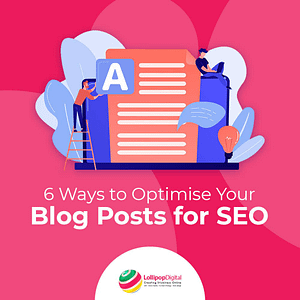Knowing which hashtag to use for your selfie is one thing, but determining the right hashtag for business marketing is a whole different turf. Social media is a great platform to build your brand, widen your reach, encourage engagement and eventually turn leads into buyers. However, it is important to know what to avoid and what to do if you want to benefit from using hashtag marketing. Take a look at the “dos and don’ts” we’ve put together to help you grow your business online.
What to Do in Hashtag Marketing
Below is the list of ideal hashtag practices that will help you get the best possible marketing results.
Make your Hashtags User-Friendly
With proper capitalisation, users will easily and correctly read your hashtag. So, make sure that the first letter of every word is capitalised (for instance, instead of #foodtruckrepublic use #FoodTruckRepublic). You would want to avoid people mistakenly reading your hashtag and taking it for another message that could even be inappropriate. When you capitalise each word, you are sending a clearer message and avoiding confusion on where one word ends and the next one begins.
If you are using hashtags to market your business, then avoid using allusions or metaphors. It’s perfectly fine to be clever and creative with your hashtags, but you also have to remember that some references or jokes may not be received well by certain audiences. If you want to promote a better brand experience among your audience, you should be straightforward.
Specific Targeting on your Hashtags
Try building engagement among a community that is interested in a specific topic. If you want a more targeted audience, your best bet is to be as specific as possible on your hashtag. Keep in mind that the more targeted your audience is, the better your engagement will be. If you haven’t developed a unique hashtag for your business, search for one or two topics that suit that photo.
Let’s say you are running a business that offers wedding coordination services. Instead of using #EventCoordination, opt for #WeddingCoordinator. The former will attract people who need planning services for corporate events and concerts, among others. On the other hand, #WeddingCoordinator will be specific to engaged couples—your target clients.
Research Trending and Popular Hashtags
You do not have to come up with a unique hashtag every time you post something for your business. One of the best ways to effectively market your brand is by taking advantage of the traffic on existing hashtags. However, you have to remember that the more popular a hashtag is, the more easily your post gets lost among the piles and piles of posts. So again, make sure that you search for topics that are specific to your brand.
Insert Hashtags in the Body
Hashtags do not have to be placed at the end of each post. If you want a clever way of using them, you can playfully insert them in the body of your content. This is particularly useful when you are marketing through Twitter which has a limited character allowance. In doing so, you will be able to relay your message completely while incorporating a relevant hashtag.
Develop Significant and Relevant Hashtags
Your hashtag does not necessarily have to feature your business name. What’s important is that it represents your brand and your belief. One example would be Tourism Australia. They created the hashtag #SeeAustralia on scenic photos they own as well as on images submitted to them by the community. When users saw photos from regular people on their official Instagram account, more and more followers were encouraged to use the hashtag and share their own images.
Even Tourism Australia social media manager Jesse Desjardins claimed that it would be ‘impossible to get the same results’ if his team went out and took the photos themselves. By promoting this hashtag, they were able to drive relevant engagement, not only in Australia but also in other parts of the world.
What to Avoid in Hashtag Marketing
Now that we’ve discussed the best practices, let’s now take a look at some of the ‘don’ts of hashtag marketing.’
Lengthy Hashtags
Even when you capitalise every word, lengthy hashtags are still difficult and complicated for users to read. Consumers do not like spending too much time deciphering a hashtag. So, if you feel you need to use more than two to three words in your hashtag, better type them as a regular text. If you want to create an impactful and memorable hashtag, keeping it sweet and short is the best way to go.
More Hashtags than Regular Text
Typically, social media users type excessive amounts of hashtags when they’re poking fun at something. However, many Instagram users have caught on to the trend that using more hashtags could also mean a wider reach and more likes. So, they’ve tried to use hashtags excessively on a single post. It is true that doing something similar will help you gain more followers. The downside is the response you’d get would generally come from spammers or from users trying to gain more followers. You won’t get results from your target audience and at the same time, you’d look desperate.
Using a Hashtag on Every Word
According to an analysis done by Social Marketing Writing, hashtagged tweets get twice more engagement than those without hashtags. On the other hand, they learned that limiting your hashtags to one to two will get you 21% more engagement as compared to using three or more hashtags. As a rule of thumb, use a maximum of two hashtags in your tweet so you can ensure the best results.
Keep in mind that the ideal number of hashtags varies depending on the social media platform. On Instagram, you can get better engagement with as many as 13 hashtags. The number of hashtags would not make a difference on Facebook, so you would fare better not bothering to use them on this platform.
Using the Same Hashtag on Every Post
Of course, if you want to build brand awareness and encourage engagement, you should frequently use the same hashtags. However, make sure that you don’t use them on every post because followers tend to get tired of redundant posts. So, remember to diversify and alternate your hashtags. On the other hand, the exception to this rule is your unique business hashtag which you can use on all your posts.
Want to learn more about hashtags? Take a look at the image below to get more information about hashtags.

So, are you ready to put your hashtag marketing to a higher level? Let us help you gain a better reach and a solid engagement online! Contact Lollipop Digital today to get more details!






